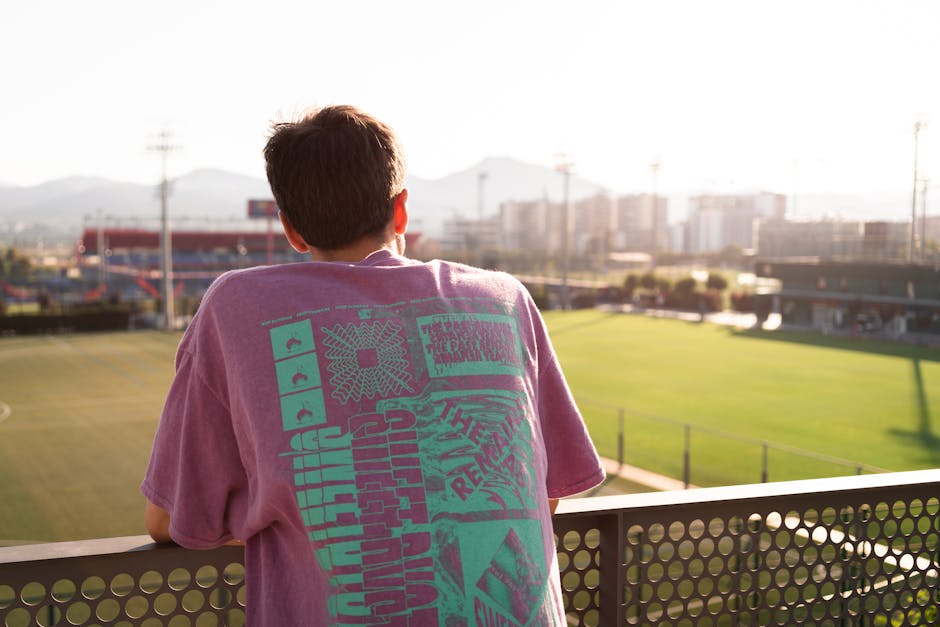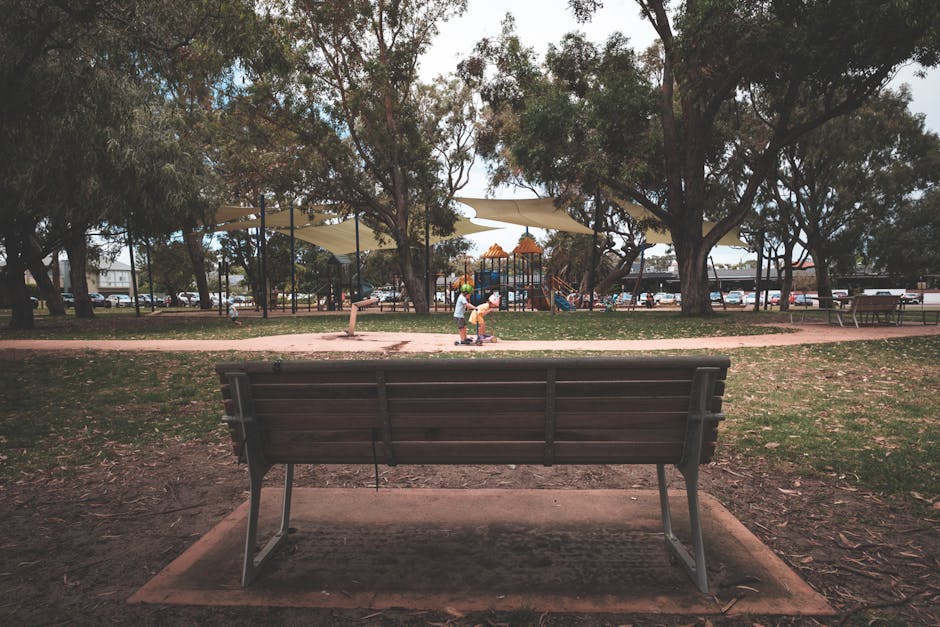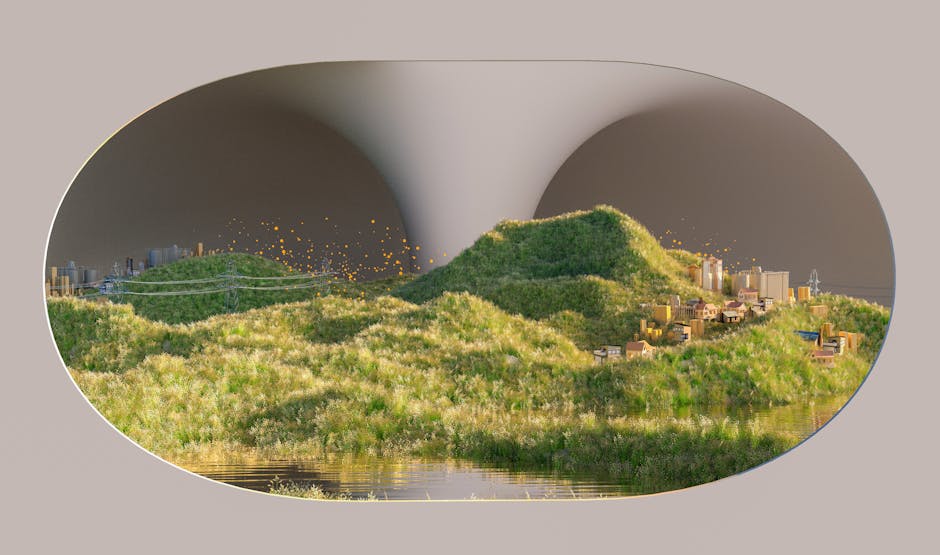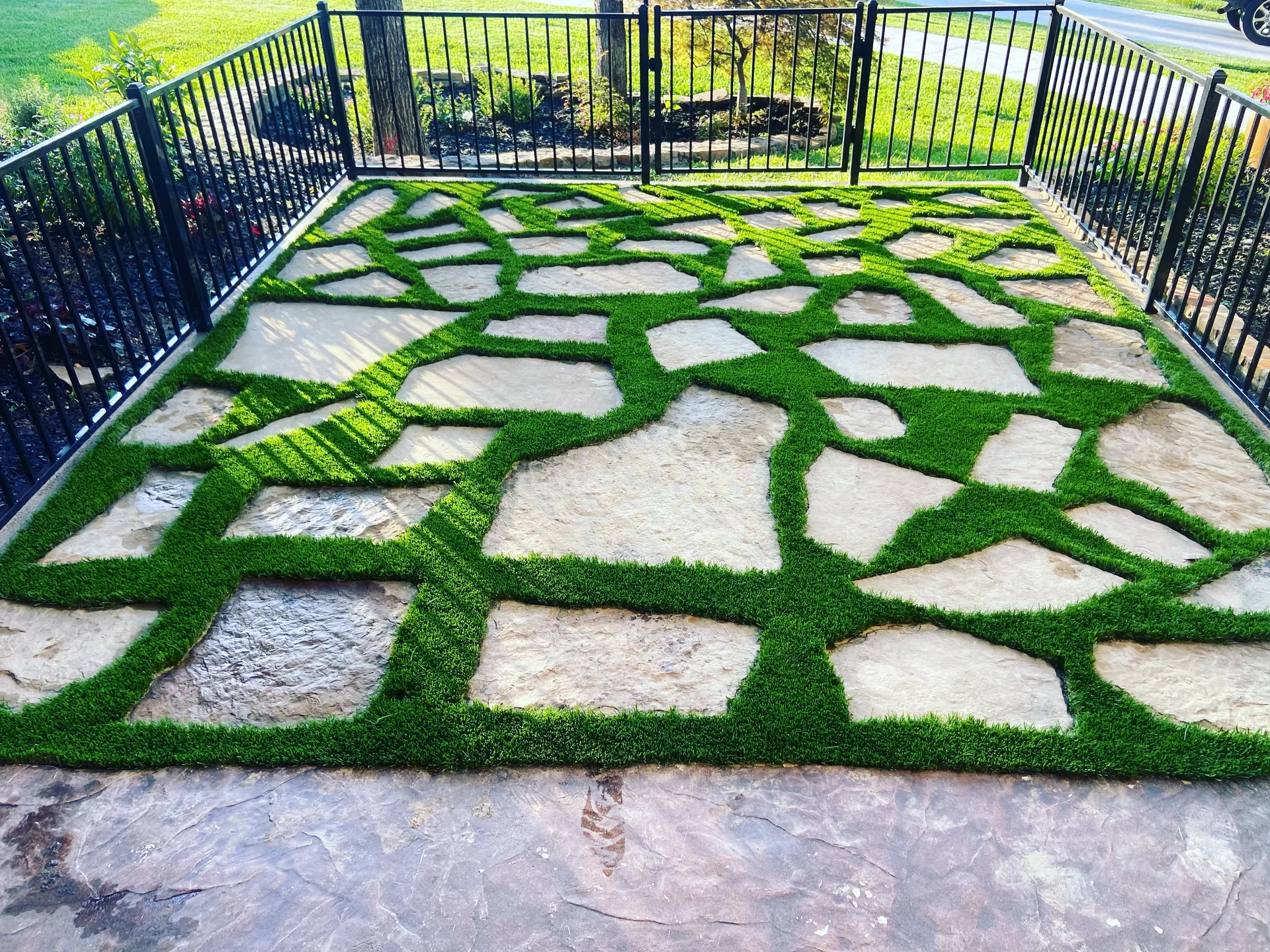
Introduction and Background of Artificial Grass
“`html
Artificial grass, also known as synthetic turf, has gained significant popularity in recent years, particularly for use in public play areas. Initially developed to address the rigorous demands of sports fields, advancements in technology have broadened its application to recreational and residential spaces. This chapter provides an overview of artificial grass, outlining its development, common uses, and variations.
History and Development
The concept of artificial grass was first conceived in the 1960s. The first notable installation was at the AstroDome in Houston, Texas, a trend that spurred the development of the term ‘AstroTurf’. Early versions of synthetic turf were designed to withstand high levels of physical activity, particularly in sports. Initial materials included nylon fibers, but over time, polyethylene and polypropylene came to dominate due to their improved durability and performance characteristics.
Common Applications
Artificial grass has found use in a variety of settings, including:
- Sports Facilities: Football, soccer, and baseball fields often utilize synthetic turf due to its durability and low maintenance requirements.
- Public Playgrounds: Many public playgrounds opt for artificial grass to provide a consistent, resilient surface that remains usable in various weather conditions.
- Residential Lawns: Homeowners increasingly choose synthetic turf to reduce water usage and maintenance efforts.
- Commercial Areas: Businesses use artificial grass for aesthetic landscaping solutions that require minimal upkeep.
Types of Artificial Grass
Artificial grass comes in several types, each tailored to specific use cases. Key variations include:
- Nylon: Known for its strength and resistance to wear, commonly used in high-traffic sports fields.
- Polyethylene: Offers a softer texture, making it suitable for playgrounds and residential lawns.
- Polypropylene: Often used for decorative purposes due to its visual appeal, though less durable than nylon and polyethylene.
Table: Comparison of Artificial Grass Types
| Type | Characteristics |
|---|---|
| Nylon | High durability, resistant to heat and heavy use, often used in sports arenas. |
| Polyethylene | Soft texture, better for play areas and lawns, UV resistant. |
| Polypropylene | Visually appealing, less durable, used mainly for decorative purposes. |
Advancements in Technology
Recent advancements have led to the development of more lifelike and durable artificial grasses. Innovations such as infill materials, which provide cushioning and stability, and enhancements in fiber structure to mimic natural grass blades, have allowed synthetic turf to closely resemble natural grass both visually and functionally.
In making informed decisions regarding the use of artificial grass in public play areas, it is essential to comprehend its developmental background and various applications. This foundational understanding sets the stage for a deeper exploration of the environmental and health impacts associated with artificial grass, which will be elaborated in subsequent chapters.
“`
Environmental Impacts: Production and Disposal
The environmental impacts of artificial grass are significant and multi-faceted, spanning from the production to the disposal stages. Understanding these impacts requires a detailed examination of the raw materials used, the manufacturing process, and the subsequent waste management or recycling practices.
Artificial grass is typically made from synthetic fibers such as polyethylene, polypropylene, and nylon. The production of these materials involves the extraction and processing of petroleum, which is a resource-intensive and polluting activity. The manufacture of these synthetic fibers generates greenhouse gases (GHGs), including carbon dioxide (CO2) and methane (CH4), contributing to climate change. According to the U.S. Environmental Protection Agency (EPA), the plastics industry is a notable source of GHG emissions.
Beyond GHG emissions, the production process of artificial grass also results in the release of other harmful pollutants. The synthesis of polymers requires significant amounts of energy and water, and it often involves the use of hazardous chemicals. For instance, the polymerization process can emit volatile organic compounds (VOCs) and other pollutants that can affect air quality and pose health risks to workers in manufacturing plants.
Another critical environmental concern is the high energy consumption associated with producing artificial grass. High temperatures and pressures are essential to produce the synthetic fibers, leading to extensive energy use, much of which comes from non-renewable sources like fossil fuels. This reliance on non-renewable energy not only increases GHG emissions but also depletes natural resources.
The disposal of artificial grass also raises significant environmental issues. Unlike natural grass, which decomposes naturally, artificial grass must be handled as non-degradable waste. Often, used artificial turf is disposed of in landfills. This contributes to the growing problem of plastic waste, which is enduring and problematic due to its inability to break down over time. In landfills, the materials in artificial grass can take hundreds of years to decompose, during which they can release toxins into the soil and water.
Recycling options for artificial grass are notably limited, complicating the disposal problem. While some efforts have been made to develop recycling technologies, they are not widely available or economically viable. Consequently, most used artificial turf ends up being discarded rather than repurposed or recycled. The European Synthetic Turf Organization (ESTO) has acknowledged the challenges and limitations of recycling artificial grass, emphasizing the need for improved technologies and practices in this area.
Moreover, the disposal process itself has additional environmental implications. Transporting used artificial grass to landfills or recycling facilities requires vehicles that emit CO2 and other pollutants. These emissions add to the overall environmental footprint of artificial grass.
In summary, the production and disposal of artificial grass have considerable environmental impacts. From the energy and resource-intensive manufacturing processes to the challenges posed by waste management, artificial grass presents several ecological concerns that must be carefully considered in the context of public play areas and other applications.
Health Impacts: Chemical Exposure and Safety Concerns
Artificial grass, often used in public play areas, has raised concerns regarding potential health impacts associated with chemical exposure. These concerns primarily stem from the materials used in the production of artificial grass, which include synthetic fibers and infill substances such as crumb rubber.
Chemical Components and Potential Exposure
The fibers in artificial grass are typically made from polyethylene, polypropylene, or nylon. These materials themselves are generally considered safe, but the infill—particularly crumb rubber—has been the subject of much debate. Crumb rubber is made from recycled tires and can contain a variety of chemicals including polycyclic aromatic hydrocarbons (PAHs), volatile organic compounds (VOCs), and heavy metals.
Research has indicated that while crumb rubber can release these compounds, the levels of exposure in typical play scenarios are generally low. For instance, a study conducted by the California Office of Environmental Health Hazard Assessment suggested that the health risks from chemicals in crumb rubber are minimal, particularly for casual contact during sports and play.
However, other studies, such as one conducted by the Environmental Protection Agency (EPA) and Centers for Disease Control and Prevention (CDC) in 2019, have emphasized the need for more comprehensive long-term research to fully understand the potential health implications. These studies suggest that while immediate health risks might be low, there is still uncertainty regarding chronic exposure effects.
Inhalation and Ingestion Risks
Another concern is the potential for inhalation of particulate matter from the artificial turf, especially during warmer weather when the material can break down more readily. Studies have shown that synthetic fields can become significantly hotter than natural grass, sometimes reaching temperatures exceeding 60°C (140°F). This increased heat can exacerbate the release of VOCs and other chemicals.
Ingesting small particles of infill, either accidentally or through hand-to-mouth contact, is another route of exposure. Particularly for young children who frequently play on these surfaces, this type of exposure can be more significant. Monitoring and maintaining strict hygiene practices can mitigate these risks to some extent, but uncertainties remain.
Injury Risk and Safety Concerns
Artificial grass surfaces can also influence injury risk profiles compared to natural grass. Some studies have suggested that while the incidence of certain types of injuries—such as ankle sprains—may be similar between artificial and natural grass, the severity of these injuries could be different. For example, a 2018 report from the American Journal of Sports Medicine found that athletes might experience more skin abrasions and turf burns on artificial surfaces.
Additionally, issues like the harder surface of artificial grass could potentially contribute to a higher incidence of head injuries in children if they fall. Ongoing improvements in the design and padding of artificial turf systems aim to mitigate these issues.
Microbiological Concerns
Unlike natural grass, artificial grass does not have any natural antibacterial properties. This can lead to the accumulation of bacteria, particularly in areas with heavy use and sweat. Proper cleaning and maintenance protocols are essential to address this issue.
A study published in the Journal of Applied Microbiology observed that while artificial turf can harbor bacteria similar to those found on natural grass, the risk of infection is low if users practice good hygiene. However, the lack of a self-cleaning mechanism is a point of concern that requires attention.
In conclusion, while the use of artificial grass in public play areas comes with certain health risks primarily associated with chemical exposure and injury concerns, current research suggests that these risks are generally manageable with proper maintenance and cautious use. Continuous research and development, along with adherence to safety guidelines, can help mitigate these risks further.
Comparative Analysis with Natural Grass in Public Play Areas
When comparing artificial grass and natural grass in public play areas, several factors are essential to consider, including environmental impact, user safety, and associated health benefits or hazards.
Environmental Impact:
Natural grass offers ecological benefits that artificial grass cannot match. For instance, natural grass plays a vital role in carbon sequestration, oxygen production, and temperature regulation. According to the United States Environmental Protection Agency (EPA), well-maintained natural grass helps capture carbon dioxide and releases oxygen through photosynthesis, contributing to improved air quality.
In contrast, artificial grass generates pollution throughout its lifecycle. From its production, which relies heavily on petrochemicals and other non-renewable resources, to its disposal, artificial grass poses significant ecological challenges. The disposal of artificial grass is particularly problematic as it is not biodegradable and contributes to landfill waste, raising concerns about long-term sustainability.
User Safety:
Surface temperature is a primary safety concern. Studies conducted by the Penn State Center for Sports Surface Research indicate that artificial grass surfaces can become substantially hotter than natural grass, with temperatures reaching up to 60 degrees Fahrenheit higher on hot days. This increase in temperature can lead to burns and heat-related illnesses, making artificial grass less suitable for use in regions with high sun exposure.
Additionally, the hardness of artificial grass surfaces can impact safety. Natural grass provides a cushioning effect that can reduce the risk of injuries from falls. The shock-absorbing properties of natural grass can help mitigate the severity of concussions and other impact-related injuries.
Health Benefits and Risks:
Natural grass aids in reducing airborne pollutants and allergens through plant processes and moisture retention. These benefits can contribute positively to the health and well-being of individuals using public play areas. In contrast, artificial grass does not offer these air-purifying advantages and may exacerbate allergenic reactions due to the buildup of dust and allergens on the synthetic surface.
The potential for exposure to harmful chemicals is another critical consideration. Artificial grass may contain substances such as lead, phthalates, and other chemical additives used to enhance durability and appearance. Exposure to these chemicals, especially over prolonged periods, can pose health risks, particularly to children who are more vulnerable to the effects of toxic substances. According to a study by Mount Sinai School of Medicine, there is a need for ongoing assessment of the potential health risks associated with chemical exposure from artificial grass products.
In summary, while artificial grass offers the advantage of lower maintenance and durability, it falls short of natural grass in terms of environmental and health benefits. The choice between artificial and natural grass for public play areas should consider these multifaceted impacts to ensure the safety, health, and well-being of users.
Maintenance and Longevity: Environmental and Health Considerations
Maintenance and longevity are critical factors when evaluating the environmental and health impacts of artificial grass in public play areas. Both these aspects have significant implications for the sustainability and safety of artificial turf installations.
The maintenance of artificial grass involves regular cleaning, the application of antimicrobial treatments, and infill replenishment. Cleaning typically includes brushing the surface to keep the fibers upright and removing debris. This can be resource-intensive, requiring water for rinsing and special detergents that could have environmental implications. For instance, frequent rinsing may lead to water runoff that could carry pollutants from the turf into local water systems.
Artificial grass installations often use infills such as crumb rubber, sand, or organic materials. Over time, these infills can become compacted or depleted, necessitating periodic replenishment. Crumb rubber, commonly made from recycled tires, has been scrutinized for potential leaching of chemicals like polycyclic aromatic hydrocarbons (PAHs) and heavy metals, which could pose health risks. The environmental impact of these materials extends to their production and eventual disposal, adding layers of complexity to their sustainability profile.
Antimicrobial treatments are often applied to inhibit the growth of bacteria and mold. While these treatments can enhance the health safety of artificial turf, their long-term environmental impacts are less well-understood. Some antimicrobials may be persistent in the environment and could contribute to antimicrobial resistance, an emerging public health concern.
When considering longevity, artificial grass has a practical lifespan of approximately 8-10 years, although this can vary based on usage intensity and maintenance quality. Once the turf reaches the end of its useful life, disposal becomes a significant issue. Most artificial turfs are composed of non-biodegradable materials, leaving recycling as a challenging and often limited option. Consequently, many synthetic turfs end up in landfills, where they can contribute to the growing problem of plastic waste.
To summarize, the maintenance and longevity of artificial grass involve a complex interplay of factors that have both environmental and health implications. While artificial grass can offer a durable and low-maintenance solution for public play areas, its long-term sustainability and health impacts require careful consideration and ongoing research.
Policy and Regulatory Landscape
The implementation and oversight of artificial grass, particularly in public play areas, are governed by a mixture of international, national, and local regulations. Various agencies have set guidelines to ensure the safety and environmental sustainability of these surfaces.
International Standards: Organizations such as the International Organization for Standardization (ISO) provide frameworks for the quality and safety of synthetic turf. ISO 9001, for instance, pertains to the quality management systems required for the production of artificial grass, while ISO 14001 focuses on environmental management systems. While these standards do not specifically address health impacts, they offer a foundation for consistent quality and environmental oversight.
National Regulations: Different countries have developed their guidelines for artificial grass, often focusing on material composition and playground safety. For example, the United States Consumer Product Safety Commission (CPSC) sets regulations to ensure playground surfaces, including artificial grass, minimize injury risks. In the European Union, the European Chemicals Agency (ECHA) has regulations concerning the permissible levels of heavy metals and other hazardous substances in artificial turf materials to reduce potential chemical exposure.
Local Regulations: At the local level, municipalities and regional authorities may impose additional requirements tailored to community needs and environmental conditions. These can include specific mandates on the type of infill material, maintenance practices, and disposal of worn-out turf to minimize environmental impact.
Health and Safety Guidelines: Several health organizations provide recommendations to ensure child safety on playgrounds with artificial grass. The American Academy of Pediatrics (AAP) advises on monitoring the temperature of artificial surfaces, particularly during hot weather, to prevent burn injuries. Additionally, regular maintenance to keep the turf clean and free from harmful microorganisms is often emphasized in public health guidelines.
The regulatory landscape for artificial grass is continually evolving. Recent discussions have emerged about the need for more stringent controls on the chemical components of synthetic turf, driven by growing evidence of environmental and health risks. Researchers and policymakers are now debating the balance between the benefits of artificial surfaces—such as reduced maintenance and year-round accessibility—and their potential drawbacks.
In conclusion, policy and regulatory frameworks for artificial grass in public play areas aim to mitigate environmental and health impacts. Continuous review and adaptation of these regulations are crucial to address emerging concerns and ensure public safety.
Future Directions and Sustainable Alternatives
The growing awareness of the environmental and health impacts of artificial grass has propelled research and innovation towards finding more sustainable alternatives. Future directions encompass developing eco-friendly materials and designing policies that mitigate adverse effects.
One promising avenue is the development of bio-based artificial grass. These materials are derived from renewable resources, reducing dependency on fossil fuels. In particular, researchers are exploring plant-based components such as polylactic acid (PLA) and soy-based polyols, which offer resilience and longevity comparable to conventional synthetic options.
Advancements in recycling technology also present a significant opportunity. Current methods for recycling artificial grass are limited, often resulting in waste ending up in landfills. Innovations in mechanical and chemical recycling are being researched to transform used artificial grass into new products. For example, the Devulcanization process allows the breakdown of rubber infill into reusable material, while chemical recycling can reclaim polymers from the synthetic grass fibers.
| Methods | Potential Benefits |
|---|---|
| Bio-based artificial grass | Reduces dependency on fossil fuels; biodegradable |
| Mechanical recycling | Transforms used grass into reusable raw materials |
| Chemical recycling | Reclaims polymers for new synthetic grass production |
Additionally, research is ongoing into organic infills such as cork or coconut husk. These materials offer the benefits of traditional infill without adverse health and environmental impacts. They can improve water permeability and reduce surface temperatures, addressing some concerns linked to artificial grass in hot climates.
Another area of focus is the development and implementation of stringent regulations and standards by governing bodies. These measures can ensure the manufacture and disposal of artificial grass adhere to environmental guidelines and protect public health. For instance, the European Union has been proactive in setting stringent standards for the recycling of artificial grass, incentivizing manufacturers to adopt more sustainable practices.
Lastly, increased awareness and education play a crucial role. Informing the public, local governments, and stakeholders about the impacts of artificial grass and the available sustainable alternatives can drive demand for more eco-friendly options. Community-driven initiatives and collaborations with environmental organizations can further support the adoption of sustainable practices.
In conclusion, while artificial grass presents certain benefits for public play areas, its environmental and health impacts necessitate a shift towards more sustainable alternatives. Through innovations in material science, recycling technologies, regulatory measures, and public education, it is possible to minimize negative impacts and promote a healthier, more sustainable future.



